Main menu
Common skin conditions

NEWS
Join DermNet PRO
Read more
Quick links
Author: Hon A/Prof Amanda Oakley, Dermatologist, Hamilton, New Zealand, 1999. Updated, September 2015.
Introduction Demographics Causes Clinical features Diagnosis Treatment Outlook
Papular acrodermatitis of childhood is a characteristic response of the skin to viral infection in which there is a papular rash that lasts for several weeks.
Other names used for this skin condition include Gianotti-Crosti syndrome, papulovesicular acrodermatitis of childhood, infantile papular acrodermatitis, and acrodermatitis papulosa infantum.

Gianotti-Crosti syndrome
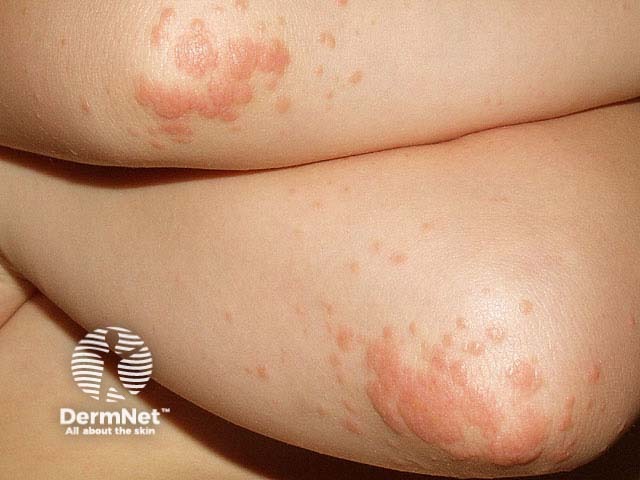
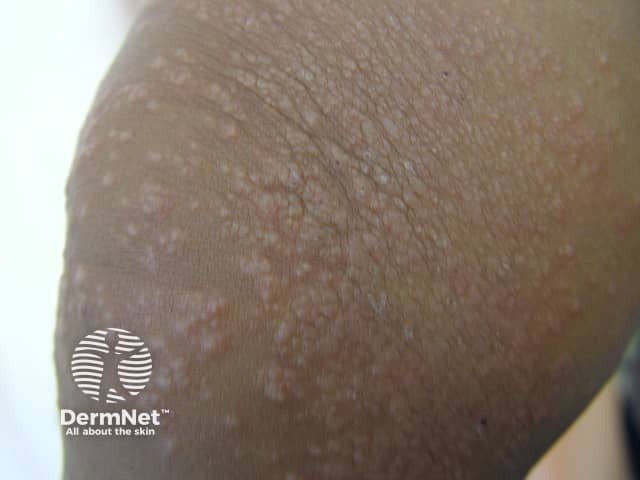
Gianotti-Crosti syndrome
Papular acrodermatitis of childhood mainly affects children between the ages of 6 months and 12 years. It has rarely been described in adults.
A clustering of cases is often observed, and a preceding upper respiratory infection is common.
The rash is a reaction to a systemic viral infection. The specific viruses causing papular acrodermatitis of childhood may include:
Although originally described in children with hepatitis B, vaccination against this virus in most populations means EBV is now the most common association.
Vaccination has also occasionally been associated with the onset of papular acrodermatitis of childhood.
Papular acrodermatitis of childhood presents over the course of 3 or 4 days. A profuse eruption of dull red spots develops first on the thighs and buttocks, then on the outer aspects of the arms, and finally on the face. The rash is usually symmetrical.
The individual spots are 5–10 mm in diameter and are a deep red colour. Later they often look purple, especially on the legs, due to leakage of blood from the capillaries. They may develop fluid-filled blisters (vesicles).
Papular acrodermatitis of childhood is not usually itchy.
The child with papular acrodermatitis may feel quite well or have a mild temperature. Mildly enlarged lymph nodes in the armpits and groins may persist for months. When papular acrodermatitis is caused by hepatitis B, there may be an enlarged liver, but there is seldom any jaundice.
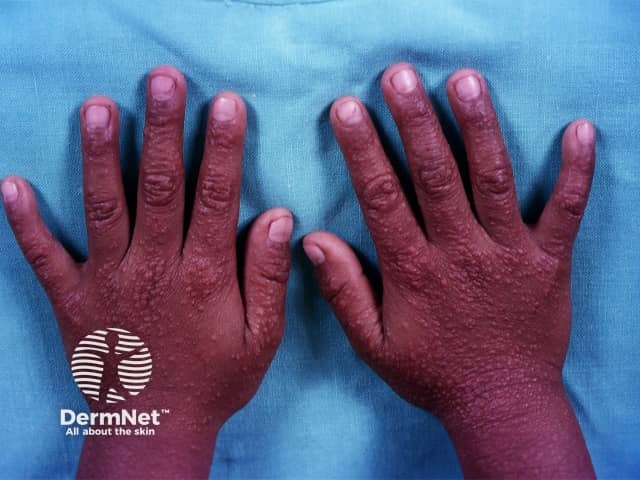
Gianotti-Crosti syndrome
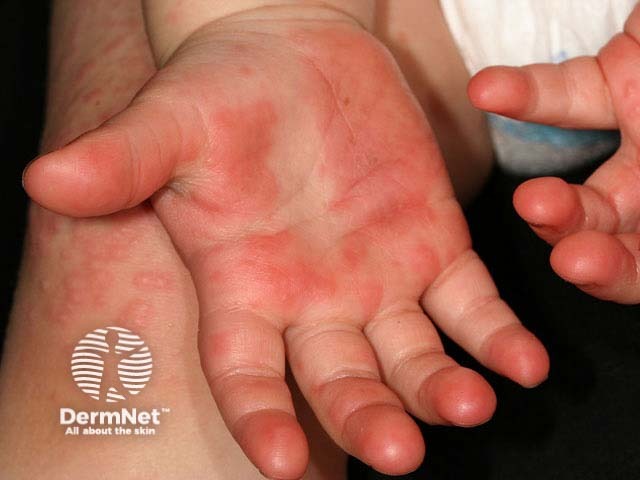
Gianotti-Crosti syndrome
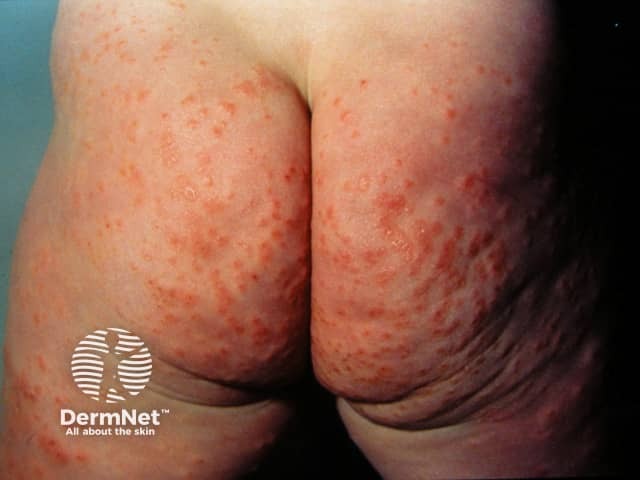
Gianotti-Crosti syndrome
See more images of papular acrodermatitis of childhood.
The clinical appearance of papular acrodermatitis is quite characteristic, and many children do not require any specific tests. However, blood tests may include:
There is no specific treatment for papular acrodermatitis of childhood. A mild topical steroid cream or emollient may be prescribed for the itch.
Papular acrodermatitis fades in 2–8 weeks with mild scaling. Recurrence of papular acrodermatitis is unlikely but has been reported.
If hepatitis B is present, the liver takes between 6 months and 4 years to fully recover. Sometimes there is persistent hepatitis and persistent viral infection.